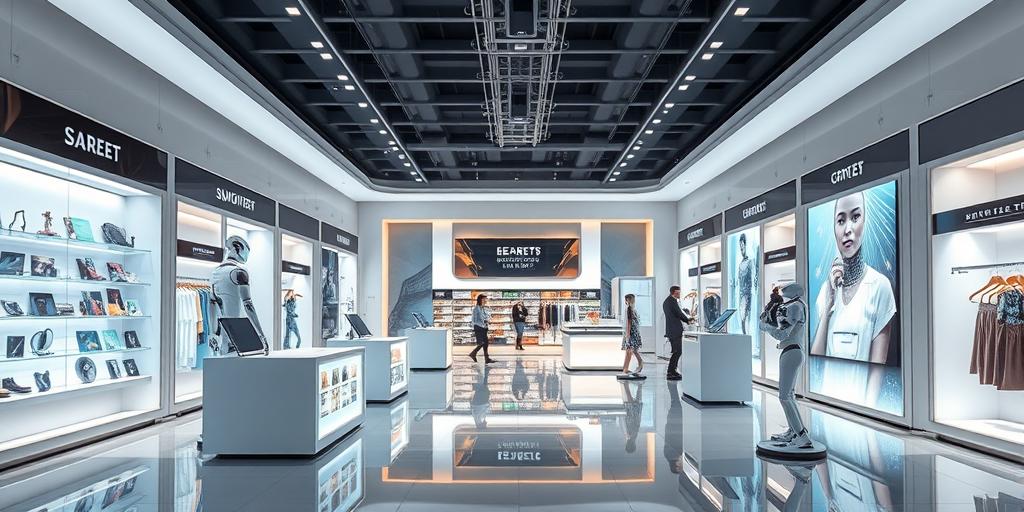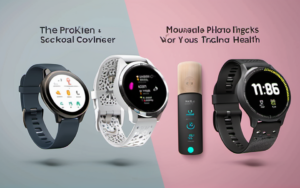The retail landscape is constantly evolving, and the rapid advancements in technology are playing a significant role in shaping the future of shopping. From mobile payments to augmented reality, retail technology is transforming the way consumers interact with brands and make purchasing decisions. This evolution is driven by the desire for a more personalized, convenient, and engaging shopping experience.
The Rise of the Connected Customer
Today’s consumers are more connected than ever before, and this connectivity is changing the way they shop. The rise of smartphones, tablets, and other mobile devices has empowered customers to research products, compare prices, and make purchases from anywhere at any time.
The Power of Mobile Shopping
Mobile shopping has become a dominant force in the retail industry, and it’s only going to continue to grow in the coming years. Consumers are increasingly using their smartphones to browse products, read reviews, and make purchases. This trend has led to the development of numerous mobile-first retail solutions, including mobile apps, mobile websites, and mobile payment systems.
The Impact of Social Media
Social media has also played a significant role in connecting customers with brands. Social media platforms like Facebook, Instagram, and Twitter have become powerful marketing channels for retailers, allowing them to engage with customers, promote products, and build brand loyalty. Many businesses are now leveraging social media platforms for e-commerce, allowing customers to purchase products directly through their social media channels.
The Rise of Personalization
Consumers are increasingly demanding personalized experiences, and retail technology is making it easier than ever for businesses to deliver on this expectation. By leveraging data analytics, retailers can gain insights into customer preferences, purchase history, and browsing behavior. This data can then be used to create targeted marketing campaigns, personalize product recommendations, and offer customized promotions.
The Evolution of the Retail Experience
The rise of the connected customer has led to a significant evolution in the retail experience. Today’s shoppers expect a seamless and engaging experience across all channels, from online to in-store.
The Rise of Omnichannel Retail
Omnichannel retail is a key trend in the retail industry, and it’s transforming the way businesses operate. Omnichannel strategies aim to provide a consistent and integrated customer experience across all channels, including online, mobile, and physical stores. This means that consumers can browse products online, make a purchase in-store, and return the product online, all without any hiccups in the process.
The Importance of Customer Service
Excellent customer service is essential for any retailer, and it’s even more critical in today’s competitive landscape. Customers expect quick and efficient responses to their queries, and they want to feel valued and understood. Retail technology can help businesses improve their customer service by providing tools for live chat, email support, and self-service portals.
The Role of Technology in Enhancing the Shopping Experience
Technology is playing a crucial role in enhancing the shopping experience for customers. Digital signage, interactive displays, and mobile apps are transforming the in-store experience, providing shoppers with more information, engaging them with products, and making it easier to make purchases.
The Future of Retail
The retail industry is constantly evolving, and technology is driving the future of shopping. Emerging technologies like artificial intelligence (AI), augmented reality (AR), and virtual reality (VR) are poised to have a significant impact on the retail landscape.
The Rise of Artificial Intelligence
AI is already transforming the retail industry, and its impact is only going to grow in the coming years. AI-powered chatbots can provide 24/7 customer support, while AI algorithms can analyze customer data to personalize product recommendations and predict future purchasing behavior.
The Impact of Augmented and Virtual Reality
AR and VR technologies are offering new ways for retailers to engage with customers. AR can be used to create interactive product displays, allowing customers to visualize how products would look in their homes. VR can be used to create immersive shopping experiences, allowing customers to virtually visit stores or try on clothes.
The Importance of Sustainability
Sustainability is becoming increasingly important for consumers, and retailers need to adapt their practices to meet these expectations. Retail technology can help businesses reduce their environmental impact by optimizing inventory management, improving supply chain efficiency, and reducing waste.
The future of retail is connected, and technology is the driving force behind this evolution. Retailers need to embrace innovation and adapt to the changing needs of consumers to remain competitive in the ever-evolving retail landscape.




